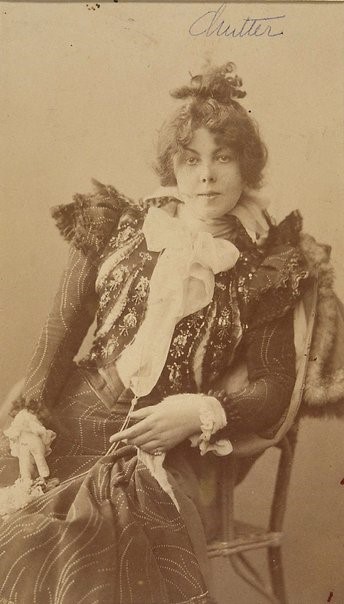
Biography
Elsa Asenijeff, an Austrian-German writer and feminist, was born Elsa Maria von Packeny on January 3, 1867, in Vienna to an upper-middle-class family. She received her education at the Wiener Lehrerinnenbildungsanstalt (teacher-training school). In 1890, she married Bulgarian diplomat Ivan Nestoroff and moved to Sofia. The couple had two sons: Asen, who died in childhood, and Heraclitus. However, the marriage was unhappy, and they divorced in 1901.
In 1897, Asenijeff relocated to Leipzig, where she began studying Psychology and National Economy at the University of Leipzig, becoming one of its first female students. The following year, she entered into a relationship with German painter Max Klinger (1857-1920). They had a daughter, Desiré, who was raised by a French family.
Klinger ended their relationship in 1913, leaving Asenijeff mentally and physically devastated. She also lost financial support and became homeless in 1923. That same year, she was admitted to the Universitätsnervenklinik (University Psychiatric Clinic). Asenijeff spent the remainder of her life in psychiatric institutions and died on April 5, 1941, in the Bräunsdorf Clinic in Germany.
Aufruhr der Weiber und das dritte Geschlecht
In 1898, Asenijeff published her theoretical work Aufruhr der Weiber und das dritte Geschlecht (Uprising of Women and the Third Sex), the same year she met Max Klinger. This book presents a strong polemic against emancipationist women, whom she referred to as “the third sex.” Asenijeff argued that every achievement of equality actually meant lowering women to men’s position, resulting in an irretrievable loss of identity. She believed that emancipated women were merely imitating men.
Heavily influenced by Nietzsche (Human, All Too Human, VII “Women and Child”), Asenijeff posited that women’s innate quality was the capacity to generate superior “Kultur” (culture). She believed that every gifted individual was half-woman, with the wisdom of a woman in a male body constituting genius. Asenijeff compared women to flowers rooted in Mother Earth, while men were likened to butterflies, their destinies mere resultants of chance.
Asenijeff advocated for women’s economic independence, arguing that if women had their own income, marriage would become a union of free persons rather than an economic contract. She viewed the contemporary women’s movement as a male plot, believing that men had tricked emancipated women into betraying their true source of power – their spiritual depth and ability to generate and nurture new life.
In Asenijeff’s view, women’s role was to suffer so that genius could be born, and then to support and inspire those who understood them. She claimed that over the course of human development, women had assigned men the task of labor, freeing themselves to play a purely spiritual role in guiding human progress.
When referring to “the third sex,” Asenijeff evoked its 1890s meaning of sexless New Women. Her erotic scheme did not consider the potential for same-sex desire. Since same-sex love would not produce children, she would likely have included homosexuals among other childless women she saw as sterile and useful only for completing routine tasks in the workplace.
Works
- Ist das Liebe? Kleine psychologische Erzählungen und Betrachtungen. 1896.
- Sehnsucht, 1898.
- Aufruhr der Weiber und das Dritte Geschlecht, 1898.
- Unschuld, Ein modernes Märchenbuch, 1901.
- Tagebuchblätter einer Emancipierten, 1902.
- Max Klingers Beethoven – eine kunst-technische Studie, 1902.
- Die Schwestern, eine Novelle, 1905.
- Die neue Scheherazade. Ein Roman in Gefühlen, 1913.
- Hohelied an den Ungenannten, 1914.
- Aufschrei. Freie Rhythmen, 1922.
- Bilanz der Moderne – Gedichte aus der Anstalt, 2010.
Ivana Skuhala Karasman
